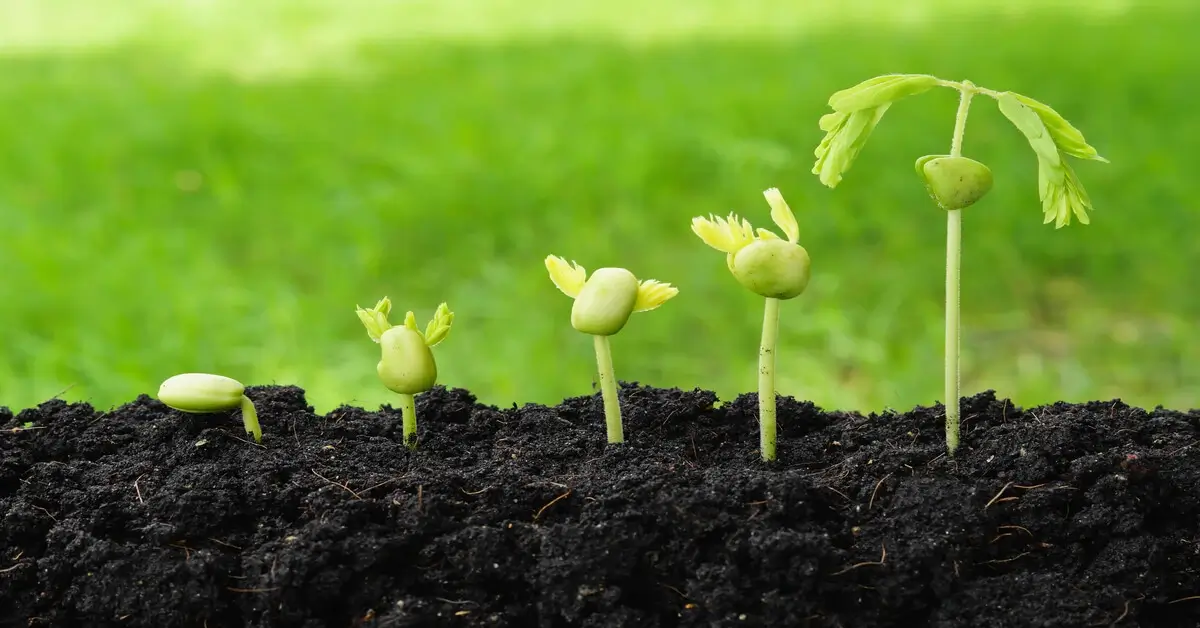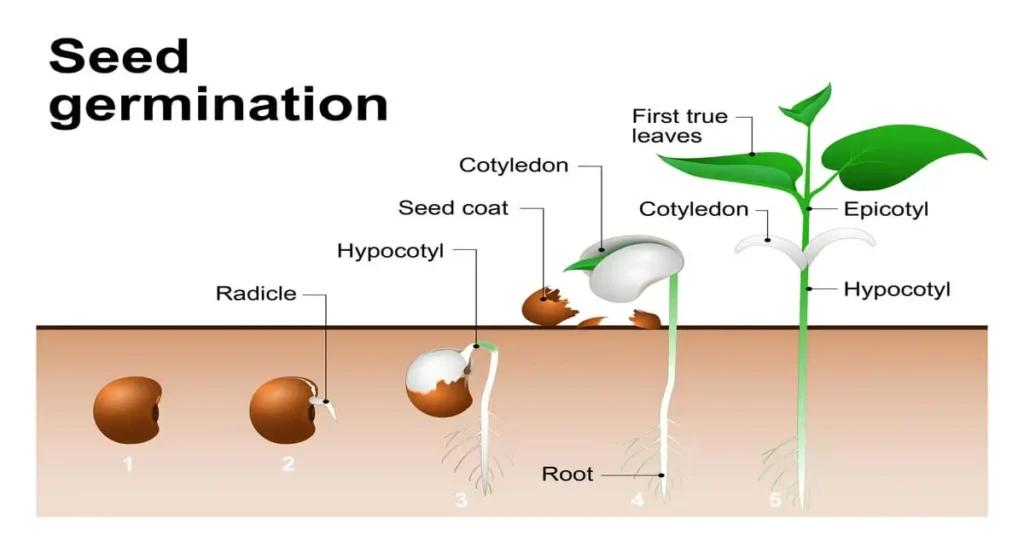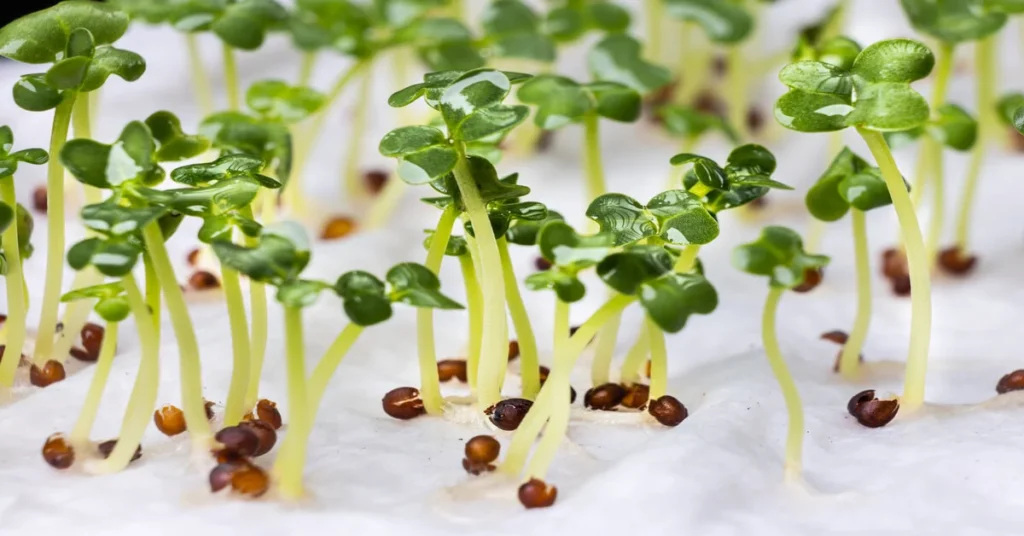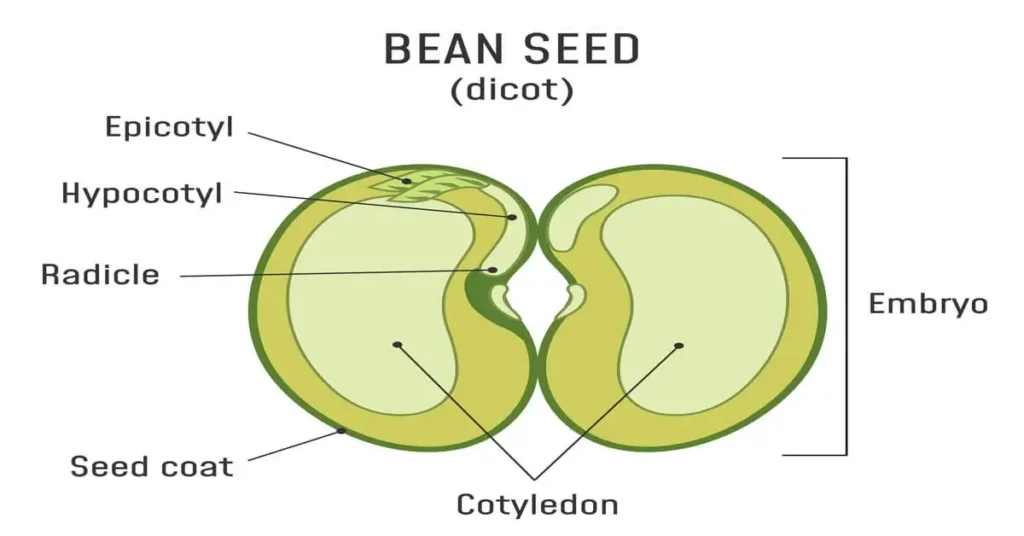Seed germination is a critical phase in a plant’s life, beginning from a dormant state to a vibrant, growing organism. This article delves deep into this intricate and essential process, exploring its stages, factors influencing it, and much more.
What is Seed Germination?
Simply put, seed germination is the process by which a seed activates its internal physiology, allowing it to sprout and grow into a plant. This phase initiates when a seed imbibes water and ends when the shoot emerges. It’s the transformation of a dormant seed to a seedling.
Critical Parts of the Seed
A seed comprises several components, the key being the seed coat, which is its protective outer layer. The seed coat’s primary function is to safeguard the inner parts of the seed from physical damage and dehydration. Beneath the seed coat, the seed houses the embryo, which will eventually grow into a plant.
Phases of the Seed Germination Process

Water Absorption (Imbibition): A seed starts its germination journey when it absorbs water. This process softens the seed coats, facilitating their cracking.
Activation of Metabolism: With water, the dormant metabolic processes within the seed are reawakened. This is crucial as the germinating seed requires these metabolic actions to grow.
Growth and Emergence of Radicle: As the seed’s metabolism accelerates, the radicle (primary root) emerges, marking the seedling’s birth.
Factors Affecting Seed Germination
Environmental conditions significantly influence this process. For optimal germination, specific factors play pivotal roles:
Water: As highlighted, the seed needs water to begin its growth. This absorption softens the seed coat and activates the seed’s internal metabolic mechanisms.
Temperature: Many seeds germinate at temperatures slightly above room temperature. However, some seeds require conditions cooler than 60°F, while others need warmer environments.
Oxygen: Essential for the germinating seed’s metabolism, oxygen aids in energy production.
Light: Some seeds require light, an environmental trigger for germination. Conversely, others prefer darkness.
Seed Dormancy and Its Role in Germination
Seed dormancy is when seeds are inactive, even under favorable germination conditions. Factors affecting seed dormancy include environmental cues, the presence of hard seed coats, or internal inhibitors. Processes such as stratification or scarification can end seed dormancy, prompting the seed to germinate.
Types of Germination
Epigeous Germination: The seedling grows above the soil. Beans showcase this type of germination.
Hypogeous Germination: The seedling grows below the soil surface. Peas exemplify this germination type.
Our Recommended Resources
10 Packs Seed Starter Tray Seed Starter Kit with Humidity Dome (120 Cells Total Tray)
Conclusion
Understanding the intricacies of the seed germination process is fundamental for any gardener or botanist. Watching a tiny seed transform into a thriving plant is a fascinating journey, as water, temperature, and light play crucial roles in this transformation. Providing the right conditions and understanding the seed’s requirements can ensure successful seed germination and promote healthy plant growth.



